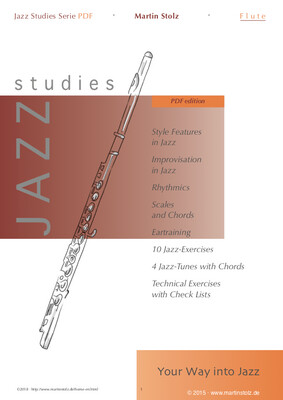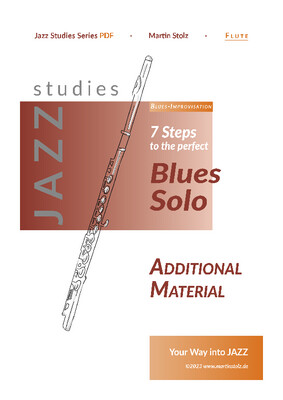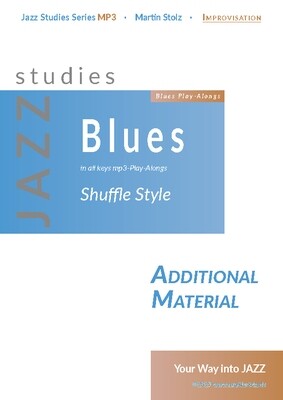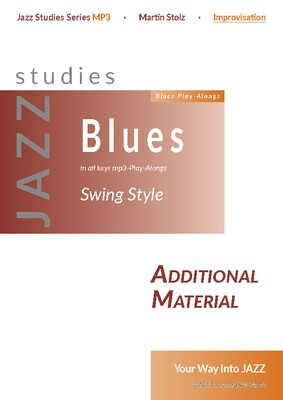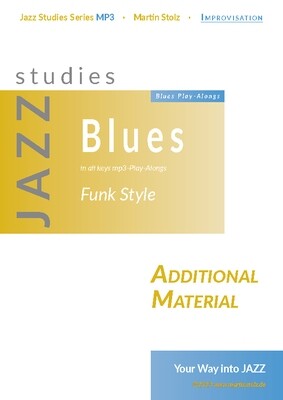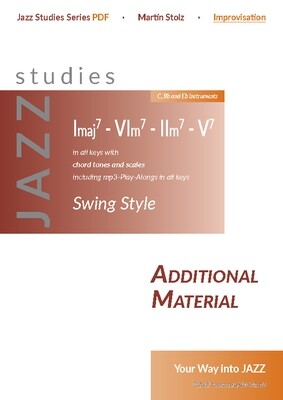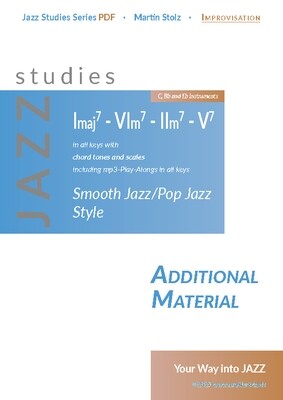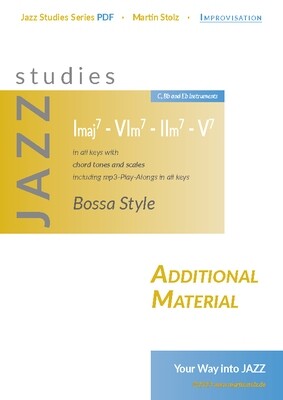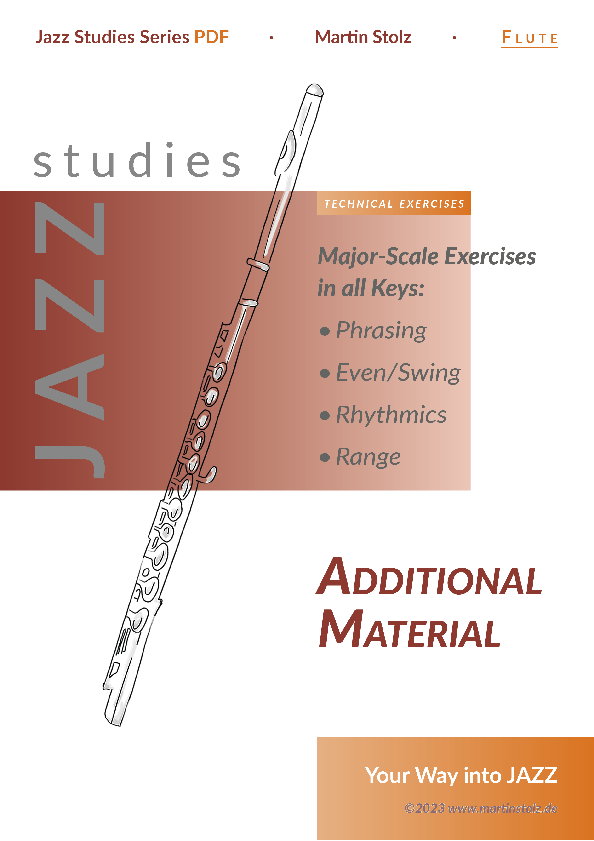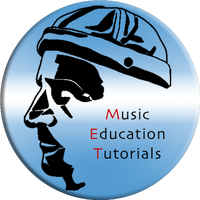Major Scale Exercises in all Keys - Flute
Jazz Studies Series - Your Way to Jazz · Additional Material for Flute
Exercises for Major Scale in all 12 Keys
Phrasing · Feeling · Rhythm · Range
For each technique, there are always 2 executon styles: straight eighth notes and triplet eighth notes (swing eighth notes). Especially in the beginning, make sure to practice as accurately as possible without making mistakes.
Keep in mind: Practising is essentially programming your muscle memory (eyes-fingers-tongue-feet)! So, if you keep making mistakes, you'll end up with a faulty program because your brain learns different options for the same musical pattern (scale exercise) - and obediently, it offers you those variations when needed.
Try to practice everything 3 times in a row without mistakes - then you're on the right track! (If you make a mistake, like a wrong note, foot movement, or tongue articulaton, on the third attempt at for instance the forelast note you misted the 3 times in a row without a mistake and you should start over from the very beginning... You'll find that it's not as easy as it seems.)
Also, remember that your brain can only learn complex tasks like playing a musical instrument through repetition. "Once is not enough" is the most important principle here! Practice the same exercise over mulple days inially - this allows your brain to process and consolidate the information during sleep, making it available when needed. I've added circles before each technique (execution style) for you to check off. For example, you can put a line through the circle when you start practicing the exercise (ø), and then add another line when you finish the exercise.
You'll notice that there are red notes in each exercise labeled as "Finger Exercise." These are either challenging passages or ranges that are less frequently encountered. Always practice these for 10-15 seconds in a loop before doing the whole exercise. This way, you're effectively programming these challenging passages, and in the next piece, such sections won't be as daunting...
Initially, look at the sheet music (note by note) while playing each exercise! This helps establish the connection between your eyes and fingers. Once you're very familiar with an exercise, practice it from memory and mentally sing along - this trains the connection between your "inner ear" and fingers.
As you can see, the exercises are organized in the order of the circle of fifths (clockwise). This is done so that only one note changes as you progress through the exercises in the given order.
(For example, C major: C, D, E, F, G, A, B, B - G major: G, A, B, C, D, E, F#).
At the end, there's a page with the scale in all keys over one octave. This is like a quick training to help your brain get used to quickly accessing all keys. The aim here is to play through all keys every day - once with "Foot A" and once with "Foot B." Ideally, set your metronome to around 60 bpm and play through the page. When using "Foot A," the metronome click represents a quarter note, and when using "Foot B," it represents a half note. This way, you're also praccing half-me and double-time rhythms...
